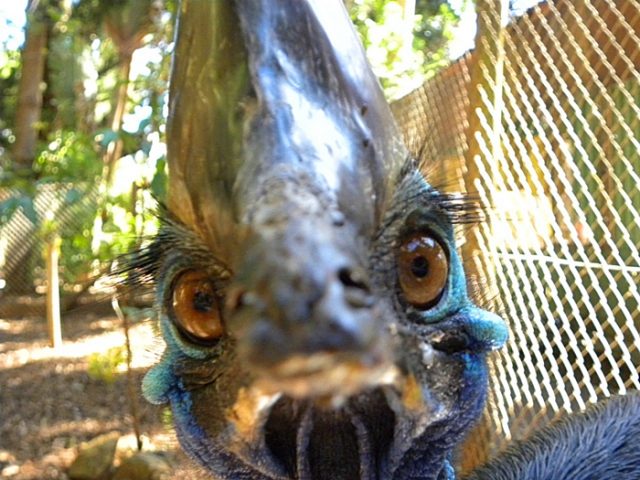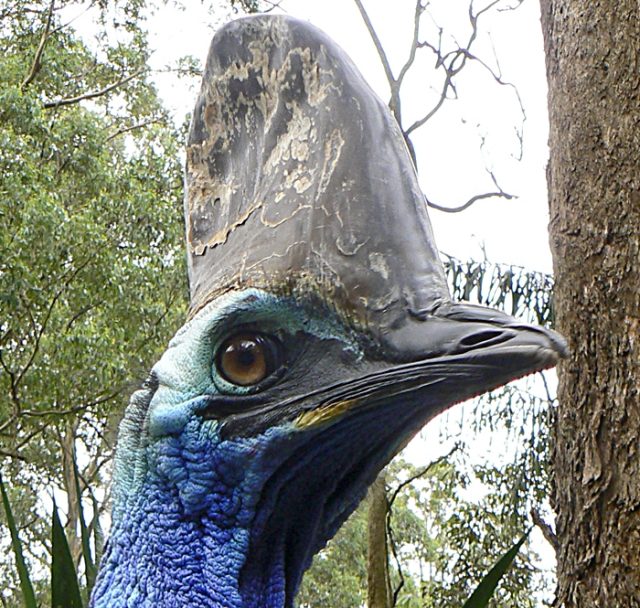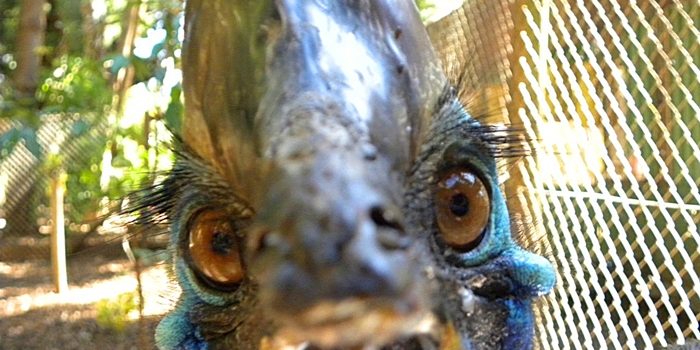How did you do with January’s Mystery Creature? It was a Cassowary, a Southern Cassowary to be exact. Did you guess it? I know that seven year-old Daniel from Singapore did, well done Daniel!
Here are ten interesting facts about the Cassowary:

Image Credit: Magdalene-b
Ten facts about the Cassowary
-
Cassowaries are large flightless birds.
There are three species currently recognised, the Southern Cassowary, the Northern Cassowary and the dwarf Cassowary. They are all considered endangered species. The Southern Cassowary is the largest, growing up to 1.6 M in height, making them the third largest bird on Earth (behind the Ostrich and the Emu).
-
Cassowaries live in New Guinea and surrounding Islands as well as north-eastern Australia.
The Southern Cassowaries are the only ones found in Australia.
-
They are shy creatures by nature, usually keeping to the dense habitat of tropical forests.
They may also be found in shrub lands, grasslands and swaps on the outskirts of dense forests. They are easily spooked and tend to run away if approached.
-
Cassawaries are considered very dangerous birds.
Although shy by nature, if cornered, these birds can attack with serious consequences. They have a very powerful kick and a large, spiked nail on their middle toe can cut a deep gash in a victim.
-
They can run very fast;
Cassowaries can run at speeds of up to 50 km/hr.
-
Cassowaries are omnivores.
They prefer a dies of fruit and seeds but will also eat small vertebrates and invertebrates. They are very important seed distributors within the rain forest.
-
The female Cassowary is stronger and larger than her male counterpart.
Unlike with many other bird species, the female is also equally as colourful.
-
Parenting is a father-only affair.
Once the female lays her eggs she disappears, leaving the male to sit on the eggs and rear the young. The egg incubation period lasts for about 50 days and the male can loose a third of his body weight during this time. Juvenile cassowaries have a dull brown plumage.
-
Cassowaries can live for decades.
In captivity they will often live up to 50 years.
-
They have a bizzare structure on top of their heads, called a casque.
This is a hollow horn like crest and the purpose of this appendage is unknown. There are many theories though as to its role or function; something it is serves a protective function; cassowaries tend to run through the forests at great speed with their head down, perhaps the casque acts as a type of helmet if they accidentally hit a tree. Or they may protect from large falling seeds as the cassowaries often hang out under trees waiting to eat falling fruit. The casque may serve as a sexual ornament, to attract a mate. It make be a handy tool for digging for seeds or other foods. Perhaps the most likely role for this unusual appendage is a resonating device, helping in some way to amplify the low frequency sounds made by the birds.

Southern Cassowary - Image Credit: Ronnie23
I think these amazing creatures serve as a great visual reminder to the fact that birds are living decedents of dinosaurs.
Check back next Monday for a new Mystery Creature!
